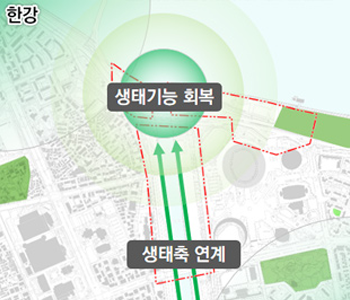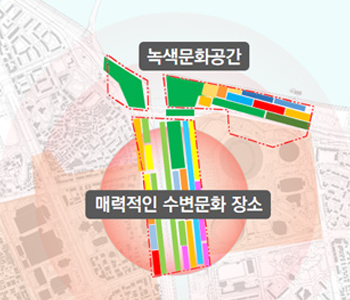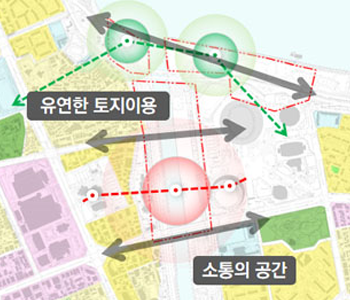Development Overview
Han River's natural features present a citizen's resting space, opening Seoul's unique attractive waterfront space.
The Han River-Tancheon area, which includes four vehicle bridges (Cheongdam 2 Bridge, Cheongdam Bridge, Bongeun Bridge, Samseong Bridge) and three pedestrian bridges (Jamsu Bridge), has lost longitudinal continuity due to the drop structure at the Tancheon-Han River confluence, and cross-sectional continuity due to concrete block revetments and floodplain pavement. This has called for improvements in connectivity to surrounding historical/cultural resources and local resources such as COEX, Hyundai GBC, and Seoul Sports Complex, as well as pedestrian activities.
Seoul Metropolitan Government plans to create waterfront cultural spaces for citizens in the Han River-Tancheon area through "2030 Han River Natural Recovery Master Plan" (December 2013, Han River Project Headquarters), "COEX-Seoul Sports Complex Area Comprehensive Development Plan" (2014, Seoul Metropolitan Government), and "Comprehensive Plan for Han River Natural Recovery and Tourism Resource Development" (2015, Seoul Metropolitan Government), to recover Han River's precious natural features and realize citizen amenity within the International Exchange Complex District.
-

- Ecological Aspect
- Will recover natural features and aquatic ecosystem health as a transition zone between Han River and upstream Tancheon ecological landscape conservation areas through creation of ecological hub, longitudinal ecological axis, and river environment improvement.
-

- Cultural Aspect
- Will provide attractive waterfront cultural places for citizens through creation of differentiated spaces by type as green cultural space in International Exchange Complex District center.
-

- Urban Aspect
- Will spatially integrate the International Exchange Complex District disconnected by Tancheon by establishing new pedestrian bridge connecting urban functions on both sides of Tancheon.
